























Chairman of the Board
ViveckGoenka
Sr.Vice President-BPD
Neil Viegas
Vice President-BPD
Harit Mohanty
Viveka Roychowdhury*





Rajesh Bhatkal
Douglas Menezes
Ashish Rampure






























Chairman of the Board
ViveckGoenka
Sr.Vice President-BPD
Neil Viegas
Vice President-BPD
Harit Mohanty
Viveka Roychowdhury*





Rajesh Bhatkal
Douglas Menezes
Ashish Rampure





As hospital chains and speciality focused facilities expand beyond the Tier 1 and 2 metros, is it a smooth ride? What are the bumps along the way?
In January, rating agency ICRA projected that private hospital chains are expected to add over 30,000 beds in the next four to five years at an investment of approximately Rs 32,500 crore. While metros like Delhi NCR, Mumbai and Bangalore are expected to remain focal points for this greenfield or brownfield capacity expansion, hospital chains are also looking at mergers and acquisitions to diversify their geographic reach and/or speciality mix in addition to increasing their scale of operations.
To start off, our cover story in the April edition focuses on how healthcare majors are Navigating healthcare in Nashik, an emerging healthcare hub in Maharashtra. While some corporate hospitals have a presence in Nashik, there are many smaller standalone hospitals as well. On the public healthcare front, schemes like Ayushman Bharat and state schemes, like Maharashtra's Mahatma Jyotirao Phule Jan Arogya Yojana (MJPJAY) scheme, have improved awareness, access and affordability to healthcare facilities.
The rationale for expansion of national hospital chains to smaller cities is clear and can be a win-win for all sides. Patients do not need to travel to cities for tertiary care if advanced care is available closer to their place of residence. Larger hospital chains expand their geographical footprint, as higher volumes lead to economies of scale.
However the criticism is that private care is more expensive for patients and the entry of such players into smaller towns causes local nursing homes (smaller than 50 beds per facility) to shut down. Already operating on wafer thin margins, they struggle for cash flow and over a period of time cede market share to national chains with deeper pockets.
Another feature of smaller towns is the larger percentage of patients claiming subsidised care under various schemes. If a hospital is unable to maintain a balance between subsidised care and full paying patients, it would take longer to break even. If this balance remains severely skewed towards subsidised care over a period of years, the facility would not have enough operating capital, as the time lag for reimbursements ranges from a few months to years.
For their part, hospitals allege that patients who can afford treatment, and thus do not fall under the prescribed income bracket (annual income below Rs

The scarcity of clinical talent, skewed ratio of subsidised and full pay health services are just two of the bumps delaying a ‘happily ever after’in India’s smaller towns
2.5 lakh), manage to procure Ayushman Bharat (or MJPJAY cards in the case of Nashik) and demand subsidised care. "You drive up in a Mercedes Benz and then flash an MJPJAY card! Is that fair?", reasoned a hospital chief.
The flip side is that there have been cases of smaller private hospitals misusing central schemes to claim benefits under Ayushman Bharat under the names of dead patients etc. Let's hope that the panel set up to review the Ayushman Bharat scheme in early March, headed by Dr V. K. Paul, member (health) of the NITI Aayog, will identify and suggest ways to address these loopholes.
Talent is a big speed breaker to building a sustainable presence in smaller metros. Most doctors would not like to relocate from metros to Tier 2/3/4 locations. Properly trained nursing and paramedical staff too is in short supply in such locations.
The scarcity of specialist doctors in smaller towns leads to poaching between the larger hospitals. Doctors too resist the practice of being full time consultants at one hospital, a requirement of some national chains. Thus strategies which work in metros will have to be tweaked for smaller locations.
Inspite of these constraints, even though at least one national chain hospital has pulled out of Nashik for some of the reasons mentioned above, the lure of expanding brand presence remains. Growth will come from locations which have the real estate to put up greenfield facilities. The cost of land in metros weighs down the balance sheet and stretches the time to break even.
Larger hospital chains have found ways to build a presence in smaller locations. Talent can be upskilled, as there are many online upskilling courses available, from the nursing, paramedic, clinician to hospital management cadres.
The search for economies of scale will lead more healthcare chains to set up connecting spokes in smaller locations, connecting them to larger hubs, always scanning for the next frontier of growth. Balancing unmet medical needs with corporate ambitions calls for a judicious mix of reading the demographic/socio-economic profile, identifying the underserved disease niche and creating a sustainable ecosystem to serve the interests of both sides.
VIVEKA ROYCHOWDHURY, Editor viveka.r@expressindia.com viveka.roy3@gmail.com










Mohit Sood ,Regional Managing Principal,ZS in an interaction with Kalyani Sharma talks about the role of GenAI in healthcare
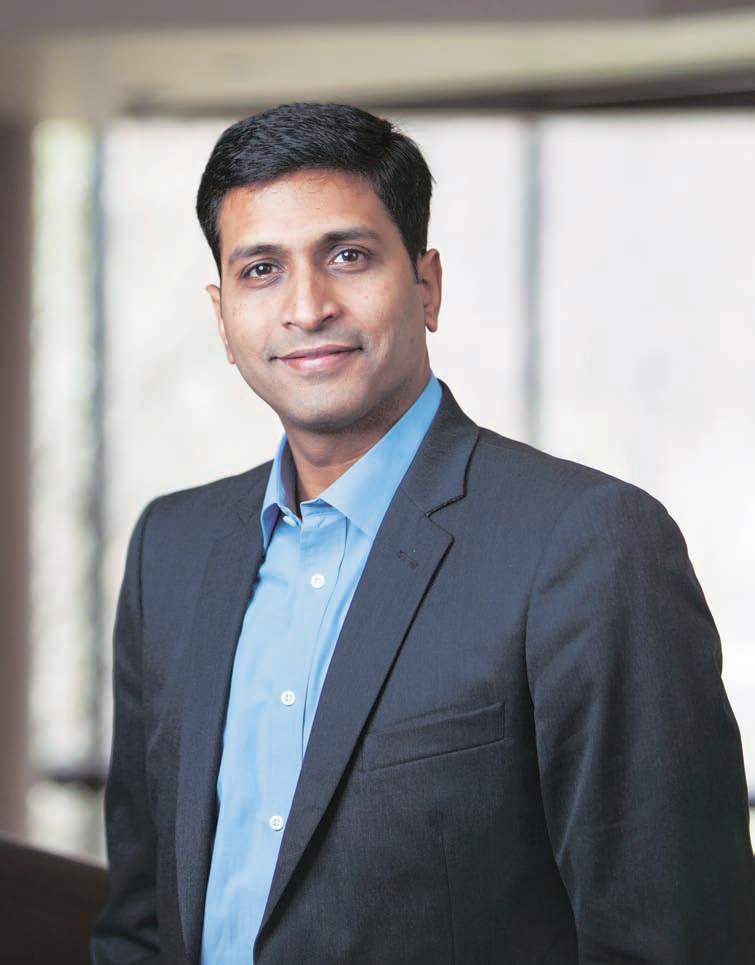
With GenAI,the possibilities are limitless.The pivotal factor is not merely whether GenAI will impact the healthcare industry,but rather if healthcare leaders will seize the opportunity to invest early and establish it as a strategic competitive advantage
How do you perceive GenAI transforming the landscape of healthcare in the coming years, and what specific areas do you believe it will have the most significant impact on?
GenAI is playing an increasingly pivotal role within the healthcare sector. By combining unstructured data, science, and technology, it is enabling innovative solutions that can improve healthcare outcomes for all. It overcomes some of the previous hurdles to AI adoption in healthcare by requiring less data, being more adaptable and being able to interface better with clinical staff. Built on technologies like Generative Adversarial Networks (GANs) and Reinforcement Learning (RL), GenAI allows for the creation of synthetic data that closely mirrors real-world data, a crucial advantage in a field where data is often sensitive.
This year, while major breakthroughs like GPT-4 in GenAI are not anticipated, one can expect the harmonisation and scalability of innovation in this field. Productivity gains from GenAI are anticipated as existential risk concerns diminish and regulatory focus increases. It will continue playing a key role in healthcare by synthesising complex information and making it easily understandable to the user. It will reshape the way patients engage in their treatment journey by improving adherence of treatment pathways for patients while serving as a co-caretaker.
Soon, we also expect Retrieval-Augmented Generation (RAG) to become more mature and
revolutionise AI and Natural Language Processing (NLP) by combining retrieval and generative models. RAG addresses limitations in Large Language Models (LLMs) like GPT, providing contextually relevant responses. Its impact will widely be felt in medical diagnosis, with its ability to instantly retrieve the latest clinical guidelines and research papers.
Multimodality will also be a focus area, improving the versatility and engagement of chatbots, allowing them to see, listen and respond effectively. In the realm of drug discovery, the application of GenAI in extracting and linking T-cell phenotypes with associated genetic allocations promises interesting developments.
How do you envision the role of healthcare professionals evolving in a future where GenAI plays a more prominent role in patient care and medical decision-making processes?
GenAI can fundamentally transform the daily routines of doctors, nurses, and other clinical health professionals. With GenAI efficiently handling routine analyses, record-keeping and interpretation of scans and imaging, healthcare professionals will have more time to address complex and nuanced patient issues.
This shift is also likely to drive the emergence of new specialisations, as the demand grows for clinical staff specialising in AIenhanced diagnoses, datadriven medicine and ethical AI. Amidst these advancements, the core principles of healthcare provision—empathy,
compassion and the human touch remain paramount.
Healthcare professionals will likely focus more on the emotional and social aspects of patient care, providing empathy, reassurance and building trust.
Lastly, to thrive in this evolving landscape, healthcare professionals will need to develop new skills.
Understanding the strengths and limitations of GenAI, data analysis proficiency, and the ability to translate complex medical information into clear explanations for patients will all be crucial.
Can you elaborate on how GenAI is being utilised to address challenges and optimise processes within healthcare institutions, such as improving patient care, streamlining administrative tasks, or enhancing medical research?
GenAI is redefining datadriven decision-making by building advanced AI capabilities using LLMs. These models possess the capacity to analyse unstructured data sourced from diverse channels and convert it into a structured format to offer comprehensive insights. Keeping the patient at the center, the focus is to ensure timely and accurate diagnosis, followed by appropriate interventions. However, a significant hurdle to this scenario is the lack of accessible information among various stakeholders, including patients, caregivers and prescribers. ZS recognises the potential of GenAI to bridge this gap by ensuring the availability of pertinent information at the right moment.
GenAI is transforming the following areas within healthcare institutions:
◆ Early diagnosis: GenAI is aiding in the early diagnosis of critical illnesses like cancer and cardiac conditions.
◆ Administrative AI: GenAI is streamlining administrative tasks in healthcare by automating
With GenAI efficiently handling routine analyses, record-keeping and interpretation of scans and imaging,healthcare professionals will have more time to address complex and nuanced patient issues.This shift is also likely to drive the emergence of new specialisations
clinical documentation. Its content generation and analytics capabilities are enhancing workflow management, delivering results faster and improving overall operational efficiency.
◆ Patient triage: GenAI addresses the challenge of limited awareness and accessibility to healthcare information, supporting patients through diagnostics and treatment decisions by providing timely and relevant information.
◆ Transformative medical research: The synthesis of data using GenAI is transforming medical research, allowing medical researchers to uncover patterns and correlations that were previously inaccessible. This is revolutionising the understanding of symptoms, medical history, drug responses and more.
◆ Novel drug discovery: The drug development process is a negative ROI for all pharma companies as the throughput of drugs is only 4 per cent. GenAI is making a lot of impact in this area by using in-silico methods to improve this percentage by discovering molecules that have a higher probability of success. Equipped with models like GANs and Variational Autoencoders (VAEs), GenAI can also predict molecular properties, generate novel chemical structures and optimise existing compounds to enhance efficacy and reduce side effects.
Can you provide insights into ZS’s GenAI capabilities and in-house
solutions?
ZS has a strong foundation in analytics and technology, which have been a part of the company's operations for 40 years. We leverage data, analytical and technological sophistication to help clients set and achieve new goals and get better products to the market faster. By integrating GenAI capabilities in analytics used in drug development and brand planning, we have reduced effort and time by more than 30 per cent and achieved faster speed to execution.
We have been able to institutionalise our decades of expertise into ZAIDYN, a healthcare-focused platform with algorithmic and data assets that clients can use readily to accelerate the use of AI across the full spectrum of life sciences disciplines. It has created real-world impact with more than 150 companies using software to drive business decisions. There has been a 15 per cent-40 per cent improvement in HCP interactions with our customer engagement offerings. We are learning from other sectors and generating insights from market research and competitive intelligence to analyse programs to improve effectiveness for pharma and healthcare sector. Our latest innovation Max.AI generative AI capabilities help develop AI agents to accelerate multiple enterprise use cases. The core capabilities Max.AI LLM agents include its easy set-up which can allow deployment within 2-4
weeks, rapid building and monitoring, dedicated early engagement, engineering, AI and customer success expertise.
We also have proprietary Gen AI tools called Chat ZS and Alter Igo which are now deployed across the entirety of ZS’s workforce. Notably, Alter Igo extends its capabilities beyond working solely with text, demonstrating a unique proficiency in handling numerical data. Trained specifically for the pharmaceutical commercial domain, Alter Igo possesses a specialized understanding of pharma terms.
What advice would you give to healthcare leaders who are considering integrating GenAI technologies into their organisations, and what key factors should they consider to ensure successful adoption and implementation? With GenAI, the possibilities are limitless. The pivotal factor is not merely whether GenAI will impact the healthcare industry, but rather if healthcare leaders will seize the opportunity to invest early and establish it as a strategic competitive advantage. Failing to do so may leave them scrambling later to catch up, once the window of opportunity has closed. Visionary leaders, who realise the significance of this technological shift, can secure substantial gains by proactively integrating GenAI into their operations today.
To harness the potential of GenAI, leaders must first determine the type of model
they wish to use. One viable option involves deploying publicly available models, which can be tailored and optimised to suit the organisation's needs.
Alternatively, leaders may choose to develop their own model, fine-tuning it to their specifications. Other key considerations include selecting the right cloud infrastructure, creating effective prompts and managing that process, ensuring the right people with the right skill sets, maintaining the privacy and security of data, and measuring the impact of AI through the right key performance indicators. Next, to effectively scale AI for value, leaders should define the desired business outcomes and then identify interconnected use cases that contribute to those outcomes. Each use case must then be individually reengineered with a view of the big picture.
Lastly, GenAI should be seen as a piece of a larger puzzle. It is not an isolated technology but is part of a continuum. Many decisions in healthcare are very complex and thus, there is a need to bring multiple aspects of AI together. Integration requires a holistic approach, incorporating classical AI, generative AI, digital elements, machine learning and deep learning. Companies must not overlook other AI programs they have developed over the past decade, which are still best suited to making predictions based on historical patterns. Thus, it is important not to lock ourselves into any one particular technology, but instead create the right foundation, which takes into account any potential biases or ethical considerations. This foundation will serve as a basis for a continuum of technologies, enabling flexible solutions for diverse business decisions.
Kalyani.sharma@expressindia.com journokalyani@gmail.com
Manu Swami,Head of Technology (Markets),Sonata Software highlights that generative AI,in recent times,is transforming the industry,utilising deep learning algorithms to process extensive datasets, unravel intricate patterns,and emulate human-like cognition
Integrating Artificial Intelligence (AI) in healthcare holds immense potential for enhancing patient outcomes and rev olutionising medical practices, and its efficacy across the healthcare supply chain is undeniable. From administrative tasks to telemedicine, AI streamlines processes, enhances efficiency, and enables healthcare providers to concentrate on the human aspects of patient care. As AI continues to evolve, it empowers healthcare professionals and augments patient outcomes.
Generative AI (GenAI), in recent times, is transforming the industry, utilising deep learning algorithms to process extensive datasets, unravel intricate patterns, and emulate human-like cognition. This transformative capability revolutionises diagnostics, therapeutics, and healthcare administration, enabling swift diagnoses, faster outcomes, and streamlined workflows. From disease diagnosis to personalised treatment plans, the capabilities of this technology in modern healthcare are remarkable. Nevertheless, this transformation presents ethical complexities as we navigate this era of innovation.
Recent advancements in GenAI and adoption of Large Language Models (LLM) have made the usage of responsible AI a crucial enterprise initiative. GenAI, especially in its transformative form, has the potential to reshape medical practices. However, this transformation is intertwined with profound ethical intricacies, necessitating a careful balance between technological innovation and integrity in healthcare applications.

Governments and regulatory bodies play a pivotal role in establishing ethical standards. These frameworks should be adaptable,fostering innovation while upholding ethical norms to safeguard patients and progress
Amid marvels, ethical dilemmas emerge as significant obstacles. Primary among these is the issue of data privacy and security, particularly concerning sensitive patient information that Generative AI relies
on. Safeguarding this data from breaches and unauthorized access is a crucial ethical obligation.
These concerns are exacerbated by algorithmic bias, which can lead AI systems to perpetuate discriminatory outcomes in healthcare, re-
sulting in divergent treatment recommendations based on race, gender, or socioeconomic status. This amplifies existing disparities in healthcare delivery.
Furthermore, the opaqueness of Generative AI algorithms poses ethical hurdles. Its complex, black-box nature makes it difficult to comprehend decisions, which is a challenge in healthcare where accountability and transparency are paramount. Understanding how AI arrives at specific diagnoses or treatment recommendations becomes vital for building trust between healthcare professionals and patients. It necessitates a deeper understanding of these recommendations.
While AI offers incredible potential in healthcare, these ethical concerns cannot be disregarded. Responsible navigation of this landscape requires acknowledging these challenges and establishing guardrails aligned with regulatory adherence.
Ensuring patient privacy and data security
The ethical challenges concerning data privacy and security in AI-driven healthcare are intricate. Patients rely on healthcare providers to safeguard their most sensitive information, making it imperative to preserve this trust. Transparency must be maintained with patients such that they are aware of the use of AI in their care and the discretion to decline its utilisation or abstain from AI-driven treatment if need be.
Further, insulating patient privacy and data security in AI applications requires healthcare institutions to implement strong cybersecurity
measures. Employing encryption, access controls, and regular security audits is crucial in reducing the risks of data breaches. Generative AI can generate synthetic patient data for training and validating AI models, ensuring responsible and ethical development and usage without compromising patient privacy.
AI developers and healthcare providers must adhere to ethical guidelines governing patient data collection, storage, and sharing in order to promote responsible data usage.
Ensuring transparency and explainability in AI systems is imperative to cultivate trust and acceptance – both vital components of ethical AI systems. It enables healthcare providers and patients to comprehend AI-driven decisions. Developers should prioritise creating algorithms that offer clear and accessible explanations to healthcare professionals and patients, fostering ethical practices and enhancing collaboration between humans and AI in healthcare.
Generative AI can explain how AI models function and identify the factors influencing their decisions. This approach builds trust in AI models and enhances their accountability. Designing AI systems as complementors, and not replacements, is crucial for human judgment, ensuring clinicians retain the ultimate authority for medical decisions in consultation with patients. The interpretability of Generative AI models is critical, and advancements in explainable AI contribute to illuminating the decision-making process,
rendering the technology more transparent and accountable.
Ethical guidelines, accountability, and regulations for AI in healthcare
Governments and regulatory bodies play a pivotal role in establishing ethical standards. These frameworks should be adaptable, fostering innovation while upholding ethical norms to safeguard patients and progress.
Ethical AI implementation necessitates collaborative efforts among stakeholders.
Governmental and institutional regulations are essential in steering the ethical integration of AI in healthcare.
Existing regulations like the Health Insurance Portability and Accountability Act (HIPAA) are foundational in preserving patient data privacy. However, the expanding role of AI in healthcare posits a revisit and careful considera-
Ensuring transparency and explainability in AI systems is imperative to cultivate trust and acceptance-both vital components of ethical AI systems
tions of these regulations and ethical guidelines in order to tackle emerging challenges.
Defining accountability for AI system decisions, especially in critical areas like medical diagnosis and treatment, is crucial. Organisations must establish flawless policies and procedures for AI governance and oversight.
Effective collaboration among healthcare institutions, AI developers, regulators, and patient communities is vital for creating an ethical and sustainable AI healthcare ecosystem. These diverse stakeholders must unite to formulate
and enforce ethical guidelines, emphasising patient well-being and societal advantage.
Healthcare experts should receive specialised training in Generative AI, equipping them to navigate the ethical intricacies and ensuring that AI-generated decisions align with moral principles and human values. Patients and communities should actively participate as essential stakeholders in the Generative AI healthcare process. Their viewpoints and apprehensions
should be actively sought, influencing the ethical boundaries of AI implementations in healthcare.
Forging an ethical future with AI in healthcare
Balancing AI inn ovation with ethical principles is an ongoing challenge that requires vigilance, determination, and governance. Careful consideration of data privacy, algorithmic biases, transparency, and regulatory compliance will lead to a future where advanced technology and compassionate healthcare coexist, benefiting patients
and society.
Embracing a responsiblefirst AI approach is paramount when crafting, constructing, and launching AI systems with positive objectives, empowering patients and caregivers alike. This approach empowers companies to build trust and scale AI initiatives with confidence.
Generative AI represents a pivotal moment in the healthcare revolution. Integrating innovative technology with ethical principles is not just a choice but a moral obligation. Maintaining a human-centered approach to patient care is crucial as we navigate the ethical challenges of AI in healthcare. This harmonious relationship between advanced technology and ethical awareness promises a future where healthcare is equitable and ethical, transcending boundaries to serve humanity.

Falgun Jani,Business Head-India Region Freudenberg Medical explains how silicone serves as a crucial component in the development of digital health devices,revolutionising the healthcare industry
Silicone has been one of the most explored materials due to its versatile properties. It has been studied extensively for various healthcare applications, even for longterm implant into the human body.
Today, silicone serves as a crucial component in the development of digital health devices, revolutionising the healthcare industry. Its unique properties make it an ideal material for creating wearable health technologies that are comfortable, durable, and safe for prolonged use.
Due to the versatile capabilities of silicone material, researchers have also explored modifying its properties for the needs of modern-day smart medical wearable devices.
The applications include neurostimulation to treat pain or the targeted training of muscle groups.
Silicone also insulates electronic components and sensors in medical products and protects them from dirt, water and perspiration. This enables devices to operate reliably over long periods.
As the demand for innovative digital health solutions continues to grow, silicone will continue to play a vital role in enabling the development of advanced wearable technologies that enhance patient care and improve overall health outcomes.
Silicone encapsulation is an essential process in the electronics industry that involves coating electronic components with a layer of silicone to protect them from environmental factors such as moisture, dust, and temperature fluctuations. This protective layer not only shields the delicate electronics from physical damage but also ensures their reliability and longevity.

One of the key benefits of silicone encapsulation is its ability to provide excellent electrical insulation. By creating a barrier between the electronic components and external elements, silicone helps prevent short circuits and other electrical failures that can occur due to exposure to moisture or contaminants.
Furthermore, silicone encapsulation offers superior thermal conductivity, allowing heat generated by electronic devices to dissipate efficiently. This helps in maintaining optimal operating temperatures and prevents overheating, which can lead to performance issues or even device failure.
In addition to protection and thermal management, silicone encapsulation also enhances the mechanical strength of electronic assemblies. The flexible nature of silicone allows it to conform to complex shapes and provide shock absorption, reducing the
risk of damage from vibrations or impacts.
From consumer electronics to industrial machinery, silicone encapsulation is essential for protecting electronics and guaranteeing their dependable operation in a variety of applications. It is an essential tool for extending the life and functionality of electronic equipment because of its adaptability, robustness, and protective qualities.
Silicone that conducts electricity is an excellent substance used extensively in neurostimulation applications. Electrically conductive silicone is a great option for applications requiring accuracy and precision due to its unique features.
One key advantage of using electrically conductive silicone in neurostimulation devices is its ability to provide reliable
electrical conductivity while maintaining flexibility. This allows for precise stimulation of targeted areas within the nervous system, leading to more effective treatment outcomes.
Furthermore, electrically conductive silicone offers biocompatibility, ensuring that it is well-tolerated by the body and minimizes any adverse reactions when used in neurostimulation implants. This is essential for long-term implantation and sustained therapeutic effects.
In neurostimulation applications, accuracy is paramount. Electrically conductive silicone enables precise delivery of electrical signals to specific neural pathways, helping to modulate neural activity with high precision. This level of accuracy is crucial for achieving desired therapeutic effects while minimising potential side effects.
Overall, the use of electrically conductive silicone in neurostimulation applications represents a significant advancement in medical technology. Its unique combination of electrical conductivity, flexibility, and biocompatibility makes it an invaluable tool for enhancing the accuracy and efficacy of neurostimulation therapies.
Reshaping the scene of clinical gadget innovation
In the field of clinical device innovation, silicone has changed everything, radically altering the process of designing and producing medical gadgets. Because of its special qualities, it is the perfect material for a variety of medical goods, such as wearable sensors and implants.
One of the key reasons why silicone is so widely used in the medical field is its biocompatibility. This means that it is welltolerated by the human body and does not elicit an immune response when implanted. This makes silicone a safe and reliable choice for medical devices
that come into direct contact with bodily tissues.
Furthermore, silicone is highly versatile and can be molded into complex shapes with precision, making it perfect for creating intricate medical devices that need to meet specific design requirements. Its durability and resistance to extreme temperatures also make it suitable for use in various clinical settings.
Lately, prosthetics, drug delivery systems, wearable health monitoring gadgets, and minimally invasive surgery have all benefited greatly from silicone's innovative role. It is a material that manufacturers find vital for creating innovative therapeutic devices that enhance patient outcomes and quality of care because of its flexibility, biocompatibility, and simplicity of sterilising.
All in all, silicone's critical job in progressing advanced wellbeing gadgets couldn't possibly be more significant. From safeguarding electronic parts in wearables to empowering exact neurostimulation applications, silicone embodiment and creative applications are reshaping the scene of clinical gadget innovation.
Silicone continues to be a major driving force behind the rapid advancements in digital healthcare, pushing the boundaries of what is practical in the delivery of medical services. We can use silicone's maximum potential to create innovative solutions that improve patient consideration, advance research, and alter medical care frameworks globally by working together and conducting ongoing inquiry.
As technology continues to advance, we can expect silicone to remain at the forefront of clinical gadget innovation, reshaping the landscape of healthcare with its remarkable properties and endless possibilities.
Chris George,Co-Founder and CEO,QubeHealth talks about the role of health insurance in mitigating the impact of healthcare expenses
Healthcare expenses are a significant aspect of an individual's life and managing them efficiently is crucial for maintaining overall well-being. Specifically in the context of Indian consumers, the relationship between finance and healthcare is increasingly becoming crucial, akin to a "vitamin" that fortifies the health of an individual's financial portfolio.
We explore here the intricate connection between finance and healthcare expenses in India, shedding light on the challenges faced by Indian consumers and how sound financial management can play a pivotal role in ensuring affordable and quality healthcare for the entire family.
India's healthcare system has witnessed remarkable advancements, yet challenges persist, especially regarding accessibility, affordability, and quality. High healthcare costs often act as a deterrent to seeking timely medical attention, leading to delayed treatments and exacerbated health issues.
The out-of-pocket expenditure for healthcare in India remains significantly high, with a large portion of the population lacking adequate health insurance coverage.
A considerable number of Indian consumers grapple with financial instability, making healthcare expenses a burden. Unpredictable medical emergencies, rising treatment costs, and the absence of comprehensive health insurance plans contribute to financial stress.
Many individuals are forced to dip into their savings, borrow from friends or family, or resort to high-interest loans to cover medical bills. This finan-

The out-of-pocket expenditure for healthcare in India remains significantly high,with a large portion of the population lacking adequate health insurance coverage
cial strain not only affects the individual's current well-being but also jeopardises their future financial security.
Health insurance serves as a crucial financial tool in mitigating the impact of healthcare expenses. However, a significant portion of the Indian population remains uninsured or underinsured. Inadequate awareness, affordability issues, and the complexity of insurance products contribute to the low penetration of health insurance in the country.
To address this, there is a need for financial education and awareness campaigns to help consumers understand the importance of health insurance and make informed decisions.
Effective financial planning plays a vital role in preparing for healthcare expenses. Creating a dedicated healthcare fund, investing in suitable financial instruments, and building an emergency fund can provide a financial cushion when medical needs arise. Additionally, understanding the
tax benefits associated with healthcare expenses can help individuals optimise their financial strategy.
By incorporating healthcare into broader financial planning, individuals can proactively manage their finances to ensure they are wellprepared for any unforeseen medical expenses.
The Indian government has implemented various initiatives to address healthcare challenges, such as the Ayushman Bharat scheme, which aims to provide financial protection to over 100 million families.
However, the success of such programs requires collaborative efforts from both the government and citizens. Public health awareness campaigns, coupled with financial literacy programs, can empower individuals to make informed decisions about their health and financial well-being.
In India, mental health often takes a backseat due to societal stigmas and misconceptions. However, mental health is an integral part of overall well-being, and neglecting it can lead to severe consequences.
Finance can play a role in promoting mental health awareness, reducing stigma, and ensuring that individuals have access to affordable mental health services. Integrating mental health coverage into health insurance plans and promoting workplace mental health programs are crucial steps in this direction.
Finance can act as a preventive "vitamin" by promoting investments in preventive healthcare measures. Regular health checkups, a healthy lifestyle, and early
detection of potential health issues can significantly reduce the long-term financial burden associated with healthcare.
Financial incentives for adopting preventive measures, coupled with educational campaigns, can encourage individuals to prioritise their health and well-being.
The integration of technology in healthcare, such as telemedicine and health apps, has the potential to revolutionise the financing of healthcare expenses.
Fintech solutions in particular can streamline the payment process, offer affordable financing options, and enhance accessibility to quality healthcare services. Collaborations between financial institutions and healthcare providers can create innovative financing models that cater to the diverse needs of Indian consumers.
In the context of Indian consumers and their healthcare expenditure, finance emerges as the proverbial "vitamin" essential for holistic well-being. The complex interplay between healthcare and finance requires a multifaceted approach, encompassing health insurance, financial planning, preventive measures, and innovative financing solutions.
By addressing the challenges associated with healthcare expenses and promoting financial literacy, individuals can navigate the healthcare landscape more effectively, ensuring that health and financial security go hand in hand.
It is imperative for individuals, policymakers, and financial institutions to collaborate in creating a sustainable ecosystem that empowers every Indian to lead a healthier and financially secure life.
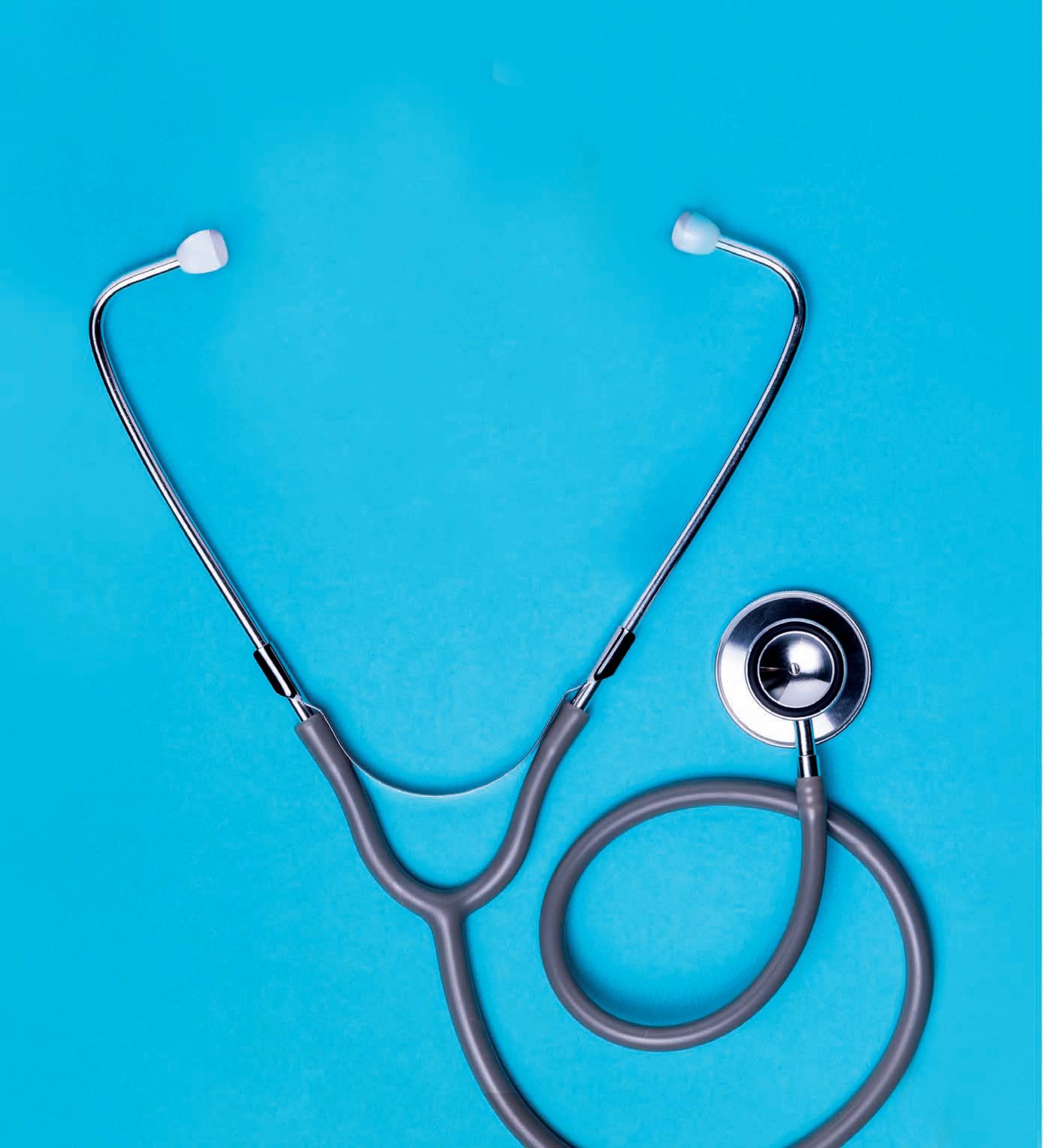


Exploring the strategic advantages and opportunities in Nashik's thriving healthcare sector
ByKalyani Sharma
Nashik, a thriving tier II city in Maharashtra, is rapidly emerging as a prominent center for advanced medical services, showcasing remarkable growth and development in its healthcare sector. A city surrounded by Maharashtra's lively scenery, stands out not only for its rich culture and history but also as a promising player in the healthcare sector.
Lately, Nashik has gained attention as a growing healthcare destination, providing distinct benefits and prospects for enterprises aiming to excel in the healthcare domain.
The factors driving Nashik's journey towards becoming a leading healthcare hub and contributing to its rise and the opportunities it presents for stakeholders in the healthcare industry:
Strategic location and connectivity
The transformation of Nashik into a healthcare hub didn't happen overnight. It was a gradual process marked by strategic investments, infrastructure development, and a focus on quality medical services.
One of Nashik's key strengths as emerging healthcare hub is its strategic location and excellent connectivity. Situated in close proximity to major cities like Mumbai and Pune, Nashik enjoys robust transportation networks, including highways, railways, and airways. This connectivity not only facilitates the movement of goods and services but also enables easy access for business stakeholders, making Nashik a convenient and accessible hub for healthcare activities.
Sharing his views, Abrarali Dalal, Director and CEO, Sahyadri Group of Hospitals, Pune shares, “Nashik has transformed significantly from being recognised primarily as a spiritual city to becoming a rapidly developing healthcare hub over the last five years. This shift occurred as local residents began seeking quality healthcare within Nashik instead of traveling to cities like Pune or Mumbai. The entry of corporate hospi-


tals marked a pivotal change, dispelling previous apprehensions about corporate healthcare. These hospitals introduced a blend of affordability and quality, attracting both local talent and patients from surrounding areas.”
Dr Raj Nagarkar, Managing Director and Chief of Surgical Oncology & Robotic Services, HCG Manavata Cancer Centre, Nashik also highlights, “The availability of good connectivity by road and rail, and now air connectivity as well, offers addon benefits to the patients who get appealed to or attracted to Nashik. Nashik is blessed as far as its ecosystem is concerned, and being in Nashik is a blessing because of its weather and surroundings, which make it a perfect destination for wellness and alternative medicine practices such as Ayurveda, Yoga, and Naturopathy. All of us know that the Vipassana Kendra located at Igatpuri has been in existence for more than 2–3 decades. This
Nashik boasts over 400 licensed hospitals within a 10-kilometer radius,with facilities ranging from 20 to over 100 beds
Abrarali Dalal
Director and CEO,Sahyadri Group of Hospitals,Pune Recently,the Indian government has definitely made a significant push to promote medical tourism in tier-2 and tier-3 cities as well.These are likely to benefit Nashik
Dr Raj Nagarkar
Managing Director and Chief of Surgical Oncology & Robotic Services,HCG Manavata Cancer Centre,Nashik
◆ Sahyadri Group of Hospitals
◆ HCG Manavata Cancer Centre
◆ Apollo Hospital
◆ Ashoka Medicover Hospitals
◆ Criticare Hospital
◆ HLLLifecare Ltd
◆ Life Care Hospitals
◆ Magnum Heart Institute
◆ Sanjeevan Hospital
◆ Shraddha Hospital
◆ Shatabdi Hospital
◆ Six Sigma Hospital
◆ SMBTHospital
◆ Suyog Hospital
◆ Vakratund Multispeciality Hospital
holistic approach to healthcare attracts individuals looking for non-conventional treatment options as well.”
cities as well. These are likely to benefit Nashik. Initiatives like the Ayushman Bharat Yojana can also enhance healthcare accessibility and affordability in the North Maharashtra region.”
Thriving healthcare ecosystem
Nashik's healthcare ecosystem is thriving, with a diverse range of stakeholders contributing to its growth. The city is home to world-class hospitals and specialised clinics. This ecosystem fosters collaboration, innovation, and synergies among healthcare players, creating a conducive environment for business expansion and development.
Dalal also mentions, “Nashik boasts over 400 licensed hospitals within a 10-kilometer radius, with facilities ranging from 20 to over 100 beds. Major corporate hospitals have gained the community's trust, and there is a noticeable trend of local healthcare providers expanding their services. This expansion is driven by a desire to offer comprehensive services under one roof, a demand accentuated by the postCOVID era's shift towards healthcare insurance and preference for multi-speciality facilities. The competition among hospitals encourages improvements in infrastructure and service quality, bridging the gap between small local hospitals and larger corporate entities.”
One of the pillars of Nashik's healthcare success story is its robust infrastructure and modern facilities. The city boasts state-of-the-art hospitals, specialised clinics, diagnostic centers, and rehabilitation facilities, equipped with advanced medical technologies and staffed by skilled healthcare professionals. This infrastructure has been instrumental in elevating Nashik's status as a healthcare destination.
On this, Dr Nagarkar added, “Recently, the Indian government has definitely made a significant push to promote medical tourism in tier-2 and tier-3
State-of-the-art infrastructure and comparatively lower cost of healthcare have fueled the growth of medical tourism in Nashik. It attracts patients not only from within the state but also from other regions.
Infrastructure plays a crucial role in Nashik's appeal as a healthcare hub. The city boasts modern healthcare facilities equipped with state-of-the-art technologies, making it an at-
tractive destination for companies involved in medical equipment, digital health solutions, telemedicine, and healthcare infrastructure development. The availability of advanced infrastructure accelerates business operations and enhances competitiveness in the healthcare market.
“The growth in healthcare infrastructure, including small nursing homes and corporate hospitals, has made Nashik a significant healthcare destination. Nashik's appeal is further enhanced by its role in the government's Smart City project and its strategic location, offering a blend of spiritual and healthcare services to both local and international visitors. The city's vast periphery serves a significant population looking for quality healthcare at affordable rates, differentiating Nashik as a critical milestone in the healthcare industry”, Dalal added.
Nashik's skilled workforce is another asset that draws healthcare businesses to the city. With a strong emphasis on education and training in healthcare disciplines, Nashik produces a talented pool of healthcare professionals, researchers, technicians, and administrators.
This abundance of skilled talent enables businesses to recruit top-notch employees, drive innovation, and deliver high-quality products and services to clients and customers.
Nashik's focus on research and development presents lucrative opportunities for healthcare companies. Collaborations with academic institutions, research centers, and healthcare providers enable businesses to engage in cutting-edge research, product development, clinical trials, and innovation projects. The city's conducive R&D environment stimulates creativity, fosters partnerships, and drives advancements in healthcare technologies and solutions.
From cardiac care and neurosurgery to oncology and fertility treatments, Nashik offers a comprehensive range of specialised healthcare services. Leading hospitals in the city have established centers of excellence in various fields, attracting patients seeking high-quality treatment and personalised care. The availability of skilled specialists and advanced medical technologies has been a key driver in
● Express Healthcare accepts editorial material for the regular columns and from pre-approved contributors/columnists.
● Express Healthcare has a strict non-tolerance policy towards plagiarism and will blacklist all authors found to have used/referred to previously published material in any form,without giving due credit in the industry-accepted format.
● As per our organisation’s guidelines,we need to keep on record a signed and dated declaration from the author that the article is authored by him/her/them, that it is his/her/their original work,and that all references have been quoted in full where necessary or due acknowledgement has been given.The declaration also needs to state that the article has not been published before and there exist no impediment to our publication.Without this declaration we cannot proceed.
● If the article/column is not an original piece of work, the author/s will bear the onus of taking permission for re-publishing in Express Healthcare.The final decision to carry such republished articles rests with the Editor.
● Express Healthcare’s prime audience is senior management and professionals in the hospital industry. Editorial material addressing this audience would be given preference.
this regard.
Cost-effectiveness is a significant advantage that Nashik offers to healthcare businesses. Compared to major metropolitan areas, the cost of operations, real estate, and skilled labor in Nashik is relatively lower, allowing companies to achieve cost savings without compromising on quality or efficiency. This cost-effectiveness enhances competitiveness and profitability, making Nashik an attractive destination for healthcare investments and operations.
On affordability, Dr Nagarkar shares, “As compared to major metros in India and definitely as compared to other international healthcare destinations, Nashik offers healthcare services at a much more affordable rate with personalised care. This affordability, combined with quality care, makes it an attractive destination for patients seeking costeffective treatment. Nashik's geographical proximity to major cities like Mumbai and Pune enhances its accessibility for patients seeking specialised medical care.”
According to experts, intensifying competition is one of the main challenges.
Dalal mentions, “The main challenge facing Nashik's healthcare sector is the intensifying competition, which risks compromising patient care if not managed responsibly. However, the focus remains on providing high-quality, comprehensive services. The future of healthcare in Nashik looks promising, with several major players planning to enter the market. Specialties such as oncology, cardiology, nephrology, and infectious diseases are expected to grow, addressing the health needs of Nashik's population and those in the surrounding areas.”
Dr Nagarkar also opines, “Nashik continues to face stiff competition from established healthcare hubs in larger cities, like Mumbai and Pune. Building awareness of Nashik's healthcare offering and changing perceptions to position it as a go-to destination for medical needs requires significant marketing efforts and success training as well. Streamlining the processes and providing clear guidelines can help mitigate the issues with healthcare infrastructure in Nashik.”
Experts also point to a surprisingly large number of cases where patients not eligible for the state insurance cards, under the Mahatma Jyotirao Phule Jan
● The articles should cover technology and policy trends and business related discussions.
● Articles by columnists should talk about concepts or trends without being too company or product specific.
● Article length for regular columns: Between 1300 - 1500 words.These should be accompanied by diagrams,illustrations,tables and photographs, wherever relevant.
● We welcome information on new products and services introduced by your organisation for our Products sections.Related photographs and brochures must accompany the information.
● Besides the regular columns,each issue will have a special focus on a specific topic of relevance to the Indian market.You may write to the Editor for more details of the schedule.
● In e-mail communications,avoid large document attachments (above 1MB) as far as possible.
● Articles may be edited for brevity,style,relevance.
● Do specify name,designation,company name, department and e-mail address for feedback,in the article.
● We encourage authors to send a short profile of professional achievements and a recent photograph, preferably in colour,high resolution with a good contrast.
Arogya Yojana (MJPJAY) scheme, manage to procure such cards and insist on being treated under this scheme. A larger than normal share of patients under this scheme makes it unviable for any hospital to function as the reimbursement time lag eats away at the hospital's cash flow.
Another problem is the propensity of consultant doctors to moonlight at various hospitals and at their private practices, while national chain hospitals would whole-time exclusive consultants. While this practice is easy to implement in major metros, it becomes difficult to track such practices in smaller locations like Nashik.
The transformation of Nashik into a healthcare hub reflects its vision, perseverance, and collaborative endeavors. Through harnessing its strengths in infrastructure, education, research, and affordability, the city has established a unique position in the international healthcare arena.
As Nashik progresses, its pursuit of healthcare excellence inspires and sets a benchmark for aspiring healthcare destinations globally.
Kalyani.sharma@expressindia.com journokalyani@gmail.com

Bangalore based Sakra Hospital is India’s first 100 per cent FDI multi-super specialty hospital powered by Japanese innovation and technology through a collaboration between healthcare major Secom Medical System and trading conglomerate Toyota Tsusho.The hospital group has announced a 500-bed facility in Bengaluru and plans to add 1,000 beds in the upcoming years.Toyota Tsusho & Secom to set up this in India for Rs 1,000 crore, Lovekesh Phasu ,Group Chief Operating Officer,Sakra World Hospital,Bengaluru in an interaction with Kalyani Sharma shares more details on this new project

What motivated Sakra World The joint venture between Secom Medical System and Toyota Tsusho plays a crucial role in promoting Sakra World Hospital by integrating cutting-edge technology and medical expertise.
The Secom group is already operating 20 multi superspeciality hospitals in Japan and Toyota is renowned globally for its technological prowess and innovation. Secom Medical System's healthcare solutions combined with Toyota Tsusho's support in technology, infrastructure and logistics contribute to enhancing the hospital's operational efficiency and patient care services.
What are the key features of the new facility, such as its capacity, built-up area, and specialties
Sakra's new facility includes a significant increase in capacity compared to the existing infrastructure, boasting a larger built-up area to accommodate advanced medical equipment and facilities. With a span of 600,000 square feet and 500 beds, our new facility aims to provide comprehensive healthcare services, including specialised treatments such as advanced oncology, robotic surgeries and cutting-edge rehabilitation programs.
Could you share more details about Sakra's ten-year journey in India and its investment strategies for expansion?
Sakra's ten-year journey in India has been marked by continuous growth and expansion efforts aimed at enhancing healthcare accessibility and quality across the country. Over the next five years, we intend to inaugurate three new hospitals in Bengaluru, with an investment totaling up to Rs 2,000 crore. This expansion initiative encompasses the addition of 1,000 beds spread across two multispecialty hospitals and a smaller boutique hospital.
Our investment strategies for expansion focus on leveraging technological advancements, forging strategic partnerships, and adopting innovative healthcare delivery models to ensure sustainable growth and excellence in patient care.
What is the significance of the fusion design in the new facility, blending Indo-Japanese architectural elements?
The fusion design in the new facility, blending Indo-Japanese architectural elements, holds significance as it reflects Sakra World Hospital's commitment to integrating cultural diversity and architectural innovation. This design approach not only creates a visually appealing environment, but also symbolises the harmony between traditional Indian aesthetics and modern Japanese design principles, creating a unique ambiance for patients and visitors alike.
Kalyani.sharma@expressindia.com
journokalyani@gmail.com
Dr Atul Mohan Kochhar,CEO,NABH underscore the profound impact that preventing HAIs can have on the well-being of kidney patients in India
In the dynamic realm of healthcare, where patient safety stands as the cornerstone of quality care, the imperative to prevent Hospital-Acquired Infections (HAIs) emerges as a critical mandate.
The burden of HAIs on kidneypatients
Acall to action: Embracing infection control
In light of these sobering statistics, it becomes abundantly clear that preventing HAIs is not merely a choice but a moral imperative. As custodians of patient safety and advocates for quality care, healthcare providers must prioritise infection control measures with unwavering commitment. Hand hygiene protocols, stringent infection control practices, and antibiotic stewardship emerge as pillars in our collective effort to safeguard kidney patients from the ravages of HAIs.
NABH's commitment to Hospital Infection Control (HIC)
At NABH, we stand at the vanguard of promoting excellence in healthcare quality and patient safety. Our guidelines on infection control and prevention serve as beacons guiding healthcare facilities towards accreditation and adherence to stringent standards. By
Hospital-acquired infections pose a formidable threat to kidney patients, whose compromised immune systems render them particularly vulnerable. Studies reveal a concerning prevalence of HAIs in Indian healthcare facilities, with surgical-site infections and pneumonia ranking among the most common culprits. For patients grappling with end-stage renal disease (ESRD) or hospital-acquired acute kidney injury (HAAKI), the stakes are even higher, with mortality rates painting a stark reality. The mortality rates associated with HAIs in kidney patients vary across hospital settings, underscoring the critical need for tailored interventions and vigilant surveillance. From ICU settings where mortality rates soar to 73.5 per cent for HAAKI to surgical and medical units facing their own challenges, the toll of infections on patient outcomes is undeniable. Furthermore, a study on community-acquired acute kidney injury in India found that 10.8 per cent of patients died at index admission, and 8.2 per cent of survivors remained with residual renal damage at 3 months.

championing best practices and fostering a culture of vigilance against HAIs, we pave the way for a future where kidney patients can receive care that is not only effective but also safe.
Within the Accreditation Standards for Hospitals, the chapter on HIC embodies NABH's unwavering commitment to p rev enting healthcare-associated infections. The standards underscore the imperative for healthcare organisations to implement robust infection control measures, safeguarding both patients and healthcare providers.
NABH's HIC standards encompass a comprehensive framework aimed at reducing
the risk of HAIs within healthcare settings. From implementing occupational health and safety practices to providing appropriate post-exposure prophylaxis for staff members, NABH's guidelines are designed to mitigate the transmission of microorganisms among healthcare providers.
Specific infection preve ntion measures in the HIC under NABH accreditation standards for hospitals include:
◆ Preventing CAUTI: A common and risky type of HAIs is catheter associated Urinary Tract Infections (UTIs) and is one of the key performance indicators for all NABH accredited hospitals. NABH monitors these KPIs every 3 months to ensure that catheter-associated UTIs do not occur in the hospital.
◆ Hand hygiene: Adherence to hand-hygiene guidelines is crucial to prevent infections
◆ Transmission-based precautions: The hospitals should adhere to transmission-based precautions to control the spread of infections
◆ Safe injection and infusion practices: Following safe practices for injections and infusions is essential for infection prevention
◆ Antimicrobial usage policy: Implementing and monitoring rational antimicrobial use is a
key measure in infection control
◆ Standard precautions: Adhering to standard precautions at all times is fundamental for infection prevention
◆ Antibiotic stewardship program: Implementing an antibiotic stewardship program helps in ensuring appropriate antibiotic use
These measures are vital components of a comprehensive infection prevention and control program aimed at reducing healthcare-associated infections in both patients and healthcare providers.
By adhering to NABH's HIC standards, healthcare facilities are empowered to fortify their infection prev ention strategies. The emphasis on work restrictions for healthcare providers with transmissible infections, immunisation policies, and measures for blood and body fluid exposure prevention underscores NABH's proactive approach towards ensuring patient safety.
By preventing hospital-acquired infections, we can ensure patient-safety for those affected by highly vulnerable diseases along with a large number of other sides of the patients too.

Dr B.S.Ajaikumar,Executive Chairman,HealthCare Global Enterprises (HCG) highlights that healthcare disparities can never be eliminated through price control; universal healthcare can alone serve the larger cause of quality treatments and lasting patient outcomes
The prevalent negative perception centered around the cost of private healthcare is hardly a surprise, but it is truly shocking to note that the Hon. Supreme Court has urged the government to enforce parity by determining fees chargeable to patients in response to a Public Interest Litigation, thereby implying that private hospitals should charge the same rates as their public counterparts. This directive has yet again highlighted the widespread apathy and ignorance that has adversely affected the healthcare sector performance and prospects over the year.
Government hospitals are funded by taxpayers’ money and they are supposed to provide subsidised, quality healthcare services to people from the lower socio-economic strata. People who can afford the standard cost of treatments wilfully approach private hospitals. Customer is the king even as a patient, and he or she decides which hospital to approach for treatment based on their priorities and preferences. Private healthcare is value-added, but it is not a monopoly. Sadly, the regulatory and judiciary bodies are treating it just like a monopoly and making life more difficult for private players than it already is.
Needless to say, the high quality of healthcare that private hospitals extend to patients comes at a cost. Hefty salaries of doctors and support staff, high-end technology, advanced equipment, and latest therapies, every aspect is managed by the private hospitals without any government support whatsoever. More importantly, even after maintaining the highest standards of quality, India is one of the world’s most cost-effective providers of

Government hospitals are funded by taxpayers’money and they are supposed to provide subsidised, quality healthcare services to people from the lower socioeconomic strata
private healthcare.
The Hon. Supreme Court should have been briefed better on the healthcare dynamic which could have eliminated the need for this arbitrary directive. If the whole approach is only about taking extreme steps, it is better to nationalise healthcare and be done with it once and for all. Private healthcare players will then get out of the system and switch to other sectors. The Supreme Court directive treads in a wrong direction which will decimate an efficient system providing worldclass healthcare at cost-effective rates. If parity is to be achieved by such means, then why single out healthcare? Why not ask the hospitality industry to do the same? Why not mandate advocates to maintain parity in the fees they charge their clientele? For that matter, why not include every sector in the purview?
Already, we have seen the ill-effects of the interference of drug controller on drug prices. Speaking of my sphere of oncology, following the drastically slashed prices of prominent cancer drugs like Cisplatin and Taxol, manufacturers are no longer keen on their production and we are facing a tough time acquiring these drugs for our patients. There are key lessons to be learnt from these flawed interventions. Price control and fixation of private healthcare services is totally unacceptable.
The onus is now on the leading private healthcare providers of the country to educate the judiciary and the common public about what it takes to provide quality healthcare. The healthcare sector in India clearly needs a prudent system that shuns the cost-based approach in favour of a value-based approach and ensures that
treatment outcomes are the same irrespective of the patient’s socio-economic status.
In the current model, the poor often contend with what they perceive as low-quality treatment in the guise of free or subsidised treatment.
Many government schemes are in operation today, and some of them are doing a good job at achieving parity. Yet, if patients from low-income groups approach private players for value-added treatment, the price differential will always be a foregone conclusion. The private hospitals shouldn’t be forced to lower the price of quality treatments for a choice that patients have made.
Hence, we need a valuebased treatment model focused on outcomes for patients rather than cost containment to bring quality healthcare to the citizens’ doorstep, accompanied by sustainable health insurance schemes. Healthcare disparities can never be eliminated through price control; nearcashless healthcare is the only answer to serve the larger cause of quality treatments and lasting patient outcomes. Insurance companies have a big role to play in making healthcare more accessible, affordable, and affable for the poorer sections of the society. The government needs to adopt a robust universal healthcare model if it really wants to remove the disparities in healthcare charges. It is hardly a surprise that advanced nations like Switzerland, Netherlands, United Kingdom, and Canada are running evolved versions of this model, but it is indeed commendable that even developing nations like Cuba, Saudi Arabia, Brazil, Costa Rica, and Vietnam have made good progress despite severe constraints.
Amit Mookim,Managing Director,IQVIASouth Asia,Member of NATHEALTH talks about the current scenario and future opportunities for healthtech start-ups in India
Over the past few years, India has experienced a surge in medical technology start-ups reshaping the healthcare sector through innovative medical devices, services, and platforms. The boom has led to the establishment of over 9000 healthtech start-ups in India. According to a report by LoEstro Advisors, the Indian healthtech market is expected to hit $25 billion by 2025, marking a twofold increase. The growth is fueled by factors like expanding internet usage, a growing need for improved accessibility, and the rising burden of chronic diseases in the country.
Healthtech start-ups face a clutch of problems, and the biggest of them is fundraising.
Previously boosted by pandemic-related investments from 2020 to 2022, the sector is now experiencing a necessary correction, with unsustainable business models facing challenges. The current attitude of investors highlights a reassessment of the investment outlook against the backdrop of the impact of past exuberance. The focus is now on profitability and operational efficiency rather than just accelerated growth. In 2023, India’s health sector saw funding drop to $683 million from $1.5 billion in 2022. The decline was attributed to reduced late-stage investments, fewer funding rounds, and a decrease in average cheque size. Amidst a less favorable funding landscape, many start-ups are pivoting their models to prioritize ROI and establish sustainable growth. While some are actively seeking growth avenues, others are grappling with survival.
However, this shift doesn’t signify a diminished need for innovation or entrepreneurship. On the contrary, there remains a substantial gap in the Indian healthcare system, spanning access, treatment, in-

Healthtech start-ups face a clutch of problems,and the biggest of them is fundraising.Previously boosted by pandemic-related investments from 2020 to 2022,the sector is now experiencing a necessary correction,with unsustainable business models facing challenges
frastructure, and new technologies. For their next phase of growth, start-ups must innovate to bridge this gap, while also prioritising productivity, efficiency, and profitability.
Other than the difficulty in raising funds, healthtech startups also face challenges like lack of mentorship, lack of medical professionals, infrastructure and digital divide, and navigating a maze of regulations.
While it may have become difficult to secure funding, a vast array of opportunities have emerged for start-ups as Ayushman Bharat Digital Mission(ABDM), the government’s program to digitize health records of citizens program,
progresses and Ayushman Bharat-Pradhan Mantri Jan Arogya Yojana (PMJAY), the government’s national health insurance scheme which aims to provide insurance cover to people from the lower income strata, intensifies its efforts to deliver accessible healthcare to all. Innovation will serve as a cornerstone, with existing platforms gaining greater relevance in this evolving landscape. The introduction of Health IDs facilitating the portability of electronic medical records will significantly boost healthtech start-ups. Telemedicine companies, which currently provide online doctor consultations, stand to gain greatly. With Health IDs containing a patient’s complete medical history, telemedicine
services are poised to become even more robust. Low-cost diagnostics, generic drug delivery platforms, and affordable health insurance options are areas which start-ups can address.
There is also a growing focus on leveraging technology to improve access to healthcare and enhance patient outcomes. New-age technology, particularly Generative AI, continues to be a boon for healthtech start-ups. Over the past few years, Generative AI has undergone a remarkably swift evolution, surpassing expectations. As Generative AI continues to define the future of healthcare entrepreneurship, Indian start-ups adept in technology can seize the opportunity to bolster their capabilities
in this domain on a global scale. Harnessing the power of AI can be pivotal in mitigating the shortage of qualified medical professionals, strengthening preventive care, refining diagnoses and treatment plans, and ultimately, advancing patient outcomes.
With a growing attention on preventive healthcare and wellness, start-ups offering digital therapy platforms addressing mental health, and preventive care will see greater opportunities in the coming years.
Another area that start-ups can focus on is the use of data analytics for automation to leverage the potential of the exponentially growing data so that it can be utilized for better patient outcomes.
Building a vibrant start-up ecosystem, particularly in the healthtech sector is crucial not only for fostering innovation but also for advancing the country’s overall development. The proactive initiatives by the government to synchronize with global advancements in AI, robotics, and quantum computing indicate a promising path forward.
India’s healthtech start-up ecosystem is currently at a critical juncture, positioned for significant expansion and impact. Despite facing challenges such as funding and infrastructural gaps, these start-ups share a unified objective of improving healthcare accessibility, affordability, and quality for all Indians.
To realise the potential of healthtech start-ups it is essential to facilitate the integration of these start-ups into the healthcare industry mainstream. For that to happen, there is a need for collaboration among the industry, policymakers, corporates, medical professionals, and other stakeholders, which will offer an essential platform for start-ups to gain traction and visibility.
Dr Suhas MS,Consultant-Internal Medicine,Cytecare Hospitals,Bengaluru stresses that while diagnostic and treatment are established practices,screening needs to be more disciplined and protocol-bound,since it is the first level of defence against illness
The practice of medicine can be divided into the verticals of screening, diagnostics and the actual treatment. While diagnostic and treatment are established practices, screening needs to be more disciplined and protocol-bound, since it is the first level of defence against illness.
Screening and diagnostics often get blurred into one process. Although both processes are investigative in nature, there is a definitive difference – screenings are designed for asymptomatic people, diagnostics are deployed on patients who report specific complaints.
Screening is a pre-emptive effort, aimed to assess an individual periodically for early warnings of any impending illness. It is not just about conducting blood and urine tests or chest X rays and ECGs, but also about juxtaposing the data with familial history, lifestyle and occupational be-
haviour to understand a genetic or environmental proclivity towards a particular illness.
Addressing an early signal in time can stop the advent of the disease, or at least slow its progress. Diagnostics, on the other hand, kick in after the person complains of certain symptoms. It involves a whodunnit kind of exercise in tracing what is the underlying cause of the symptom.
There is usually a tendency to cut costs by avoiding screenings, which many still consider unnecessary, especially if the reports come clean. However, timely screening can cut down major medical costs later. This understanding needs to be communicated effectively to people, and made part of mandatory health check-ups.
Screening guidelines
While designing corporate or other health plans, it is prudent to follow some guidelines to make it most effective.
Without major risk factors (genetic history of any dis-

ease, smoking, alcohol), the recommended frequency of screenings should be as follows:
◆ Above 30 years – once every two years
◆ Above 35 years – once every year
These screenings should not be limited to diabetes, hypertension and cardiac issues, even though they form the bulk of age-related non-communicable diseases. The protocol should be a thorough one, encompassing the examination of all important systems of the human body,
through blood, urine, stool and other non-invasive tests like ultrasound and X rays if indicated. It should include eye and ear check-up, assessment of weight and body mass index, screening for prospective gastrological issues, mammography (typically suggested after 40 years of age) and PAP smear test for women to screen the breasts and cervix, and urological check-up for men to look out for early signs of prostate problems and other urological complications. A colonoscopy is recommended, once in 5 years, for people over 50 years of age.
Vaccine protocol
Similar to Pediatric Vaccination, adult vaccination is gaining importance, as many communicable and few non communicable diseases can be easily prevented and reducing a huge burden on a patient's health and quality of life. Importance of vaccination is known by many after the COVID-19 pandemic. Vaccina-
tion is important & required by patients who have comorbid conditions like Malignancy, HIV Infections, Organ Transplant, Chronic Heart, Liver, Lung, Kidney Disease, Alcoholism, Cigarette Smoking, Diabetes Mellitus.
◆ >15-26 years – HPV Vaccine – 3 doses
◆ >19 years – Influenza Vaccine yearly (Flu Shot)
◆ >50 years – Shingles Vaccine- 2 doses
◆ Hepatitis B Vaccine with special consideration to above said diseases/condition
◆ >60 years - Pneumococcal vaccine
Apart from these, DPT booster shots are recommended every 10 years. A typhoid booster shot every two years is also recommended, especially for people living and working in, or travelling to, high-infection risk areas.
It’s important to maintain the records of all medical screenings and vaccinations. They constitute important health data, valuable for assessing patients over time.

Biju Davis,Senior Vice President,Engineering,Model N highlights that analytics predict clinical risks and personalise treatment plans,leading to better patient care and reduced costs
We observe that the convergence of AI, automation and analytics is revolutionising healthcare. AI algorithms analyse radiological and pathological images to detect illnesses early. Automated drug delivery systems ensure precise medication dosing and adherence, improving patient outcomes. Analytics predict clinical risks and personalise treatment plans, leading to better patient care and reduced costs.
Now, this powerful trio is transforming revenue management for medtech. Traditional revenue management in medtech has been plagued by manual tasks, siloed data, and reactive decision-making, which has often led to missed opportunities, inefficient pricing and ultimately, lost revenue. AI-powered tools analyse vast amounts of data to identify under-billed services and optimise coding practices, maximising reimbursements.

up valuable human resources for more strategic endeavours. It not only improves efficiency but also reduces errors and ensures faster reimbursements.
Automation is widely regarded as a productive tool by both employees and leaders. In a recent survey, over 90 per cent of workers reported that automation solutions improved their productivity, while 85 per cent affirmed that these tools fostered collaboration within their teams. Furthermore, nearly 90 per cent expressed confidence in automation solutions to facilitate error-free productivity and expedite decision-making processes.
ing errors further contributes to cost reduction by mitigating the need for corrective actions. The next major benefit from leveraging data-driven insights enables more informed decision-making across various aspects of the business. Whether it’s refining product development strategies, fine-tuning marketing approaches or enhancing overall business performance, access to comprehensive analytics guides medtech firms towards optimal choices. Through personalised pricing models, streamlined operations and the introduction of innovative solutions, medtech companies can differentiate themselves within the market, attracting customers and securing market share.
Integrating newtechnologies with medtech
Repetitive tasks like claims processing, coding and billing are being automated, freeing
Automation streamlines administrative tasks, freeing up staff to focus on revenue-generating activities. Advanced analytics predict patient payment behaviour, enabling proactive collection strategies and reducing bad debt. By leveraging AI, automation and analytics, medtech can not only improve patient care but also achieve sustainable financial growth. This innovative approach paves the way for a future where healthcare is both effective and financially sound.
The integration of cuttingedge technologies within the medtech sector offers a host of advantages. By employing improved pricing strategies and optimising resource allocation, medtech companies can experience substantial growth in revenue. Faster reimbursements ensure a steady influx of funds. With the automation of routine tasks, such as administrative duties and data processing, alongside streamlining processes, the operational costs will come down. Minimis-
Robotic process automation offers the lowest barrier to entry, but companies are placing a higher emphasis on advanced analytics and AI. Hi-tech is more likely to use robotic process automation to support its revenue management processes than its counter-

parts in life sciences.
Companies can purchase a proven industry solution to ensure their revenue optimisation and compliance applications remain on the cutting edge. A survey shows that 66 per cent of the executives prefer a mix of in-house and adaptable external solutions, seven per cent prefer a tailormade external solution, while the remaining rely solely on inhouse development. The heavy reliance on homegrown solutions and a hybrid mix of technologies could be a contributing factor to the lack of confidence in internal data quality.
Integrating new technologies with existing systems can be complex and costly. Companies must ensure a seamless
data flow and avoid creating new silos. The healthcare industry handles sensitive patient data, so robust cybersecurity measures are crucial to protect privacy and comply with regulations. And finally, using these technologies effectively requires skilled data analysts, AI specialists and change management experts. Identifying and attracting these individuals can be challenging.
Introducing a centralised approach to revenue management
While regional variations in healthcare systems and regulations exist, a growing trend towards unified revenue management solutions is emerging. It allows companies to
track performance across different locations, compare strategies and identify best practices for broader implementation. The centralised approach facilitates strategic planning, enables knowledge sharing and ultimately leads to improved performance across the board.
Revenue management applications become more consistent across regions. Of the companies responding to the survey that have global operations, less than 10 per cent always use the same applications and technology across all regions. The most common approach taken by nearly threequarters of companies with operations in multiple countries is to use the same solutions with some exceptions. It
is marked change from last year, when nearly 50 per cent of respondents indicated that each of their regions relied on different revenue management solutions.
So why do companies use different applications? The most common explanation is that solutions cannot effectively handle different geographical process variations and compliance requirements. To a lesser extent, reasons for using certain technologies are related to how technology decisions are made. Regional ownership can drive different technology decisions for different areas. Regardless of the underlying reason, using diverse technology can hinder a company’s ability to understand performance and trends
on a global scale, and ultimately, devise and execute strategies to optimise revenue across the organisation.
The shift towards cutting-edge technologies in medtech revenue management is a fundamental transformation with significant implications for the future of the industry. By embracing automation, AI, and advanced analytics, medtech companies can unlock new levels of efficiency, optimise pricing and ultimately drive sustainable business growth. As technology continues to evolve, so will its impact on reve nue management, shaping the future of the healthcare landscape in the future.














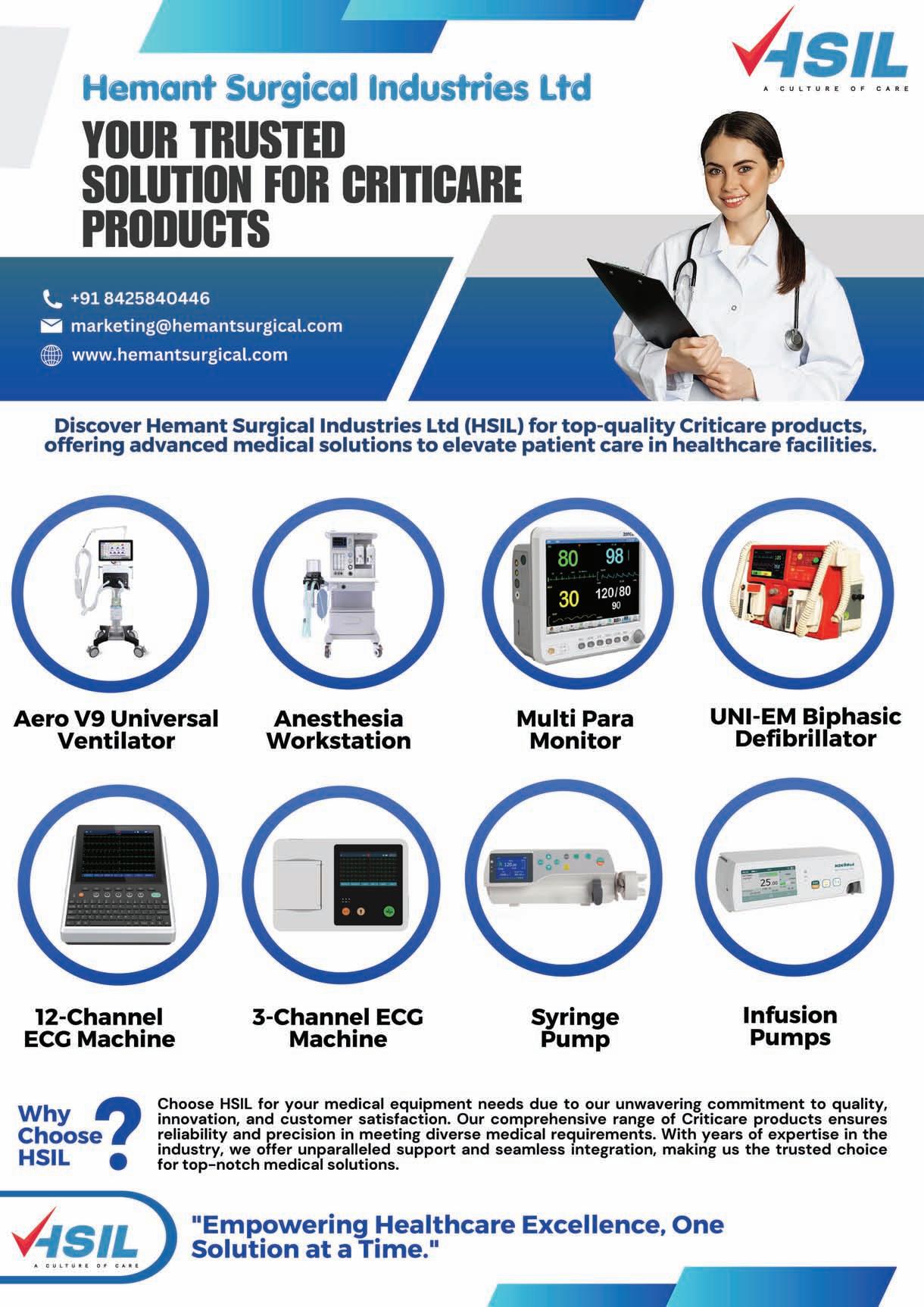













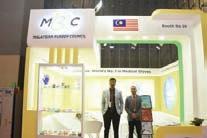


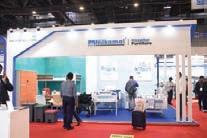
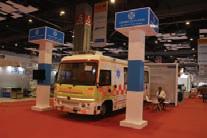
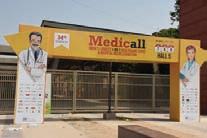
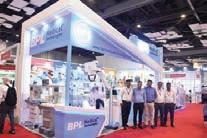














Amardeep Gupta,Senior Business Manager-Flow cytometry,Regional Manager,EHC – APAC, Sysmex explains how Sysmex leverages its technology and business know-how cultivated in the IVD domain to create high-value-added testing and diagnostic technologies using the latest technology
Based on the “Sysmex Way,” the corporate philosophy of the Sysmex Group, and set our long-term vision, “Together for a better healthcare journey.” We will provide new value by creating innovations in the domain ofin vitro diagnostics (IVD) as well as by exploring the domains of presymptomatic and preventive medicine and treatment, thus improving the lifelong healthcare journey of each individual. Furthermore, we will continue to resolve medical issues through products and services, instilling confidence among a diverse range of stakeholders and aiming to realise a sustainable society while achieving sustainable growth for Sysmex.
In 2018, Sysmex announced its vision of becoming “A Unique & Advanced Healthcare Testing Company” under its long-term corporate strategy. To this end, we have been working to strengthen our diagnostics business, while also developing new testing methods, including a complete solution for oncology disease state starting from Hematology, Digital morphology, Clinical flow cytometry, FISH (Fluorescence In Situ Hybridization and NGS reagents. We also took on a new challenge, launching the medical robotics business.
As a part of long-term corporate strategy, we expand our target domain from diagnostics to the healthcare journey and accelerate business growth by leveraging our strengths.
To achieve a better healthcare journey, it is crucial for healthcare professionals (medical institutions, medical staff, etc.) to improve the level and quality of medical care, utilise healthcare information and improve the medical economy. Sysmex leverages its technology

and business know-how cultivated in the IVD domain to create high-value-added testing and diagnostic technologies using the latest technology. We aim to augment growth and profitability by deepening our diagnostics business and pursuing added value through innovation.
In the hematology field, we are accelerating the global rollout of the XR™-Series Automated Hematology Analyzer, in the aim of enhancing growth and profitability. In addition, we will introduce products that meet market needs in emerging markets, where population growth, economic development, and improved healthcare quality are expected, and contribute to improving
healthcare access and infrastructure. In particular, we consider India an important market, and we will accelerate business planning, product development, and market introduction, working to expand our market share in emerging markets.
In the domain of personalised medicine, which is expected to grow significantly, Sysmex is developing new parameters that utilise its strength in liquid biopsy technologies (genes, cells and proteins). The Company aims to commercialise and launch technologies that will lead personalised medicine, using its own research products and technologies.
Continued on Page 33
As a part of long-term corporate strategy,we expand our target domain from diagnostics to the healthcare journey and accelerate business growth by leveraging our strengths

Kaushik Shah,Director,HSIL,shares that with an unwavering commitment to quality, innovation,and customer satisfaction,HSILstands out as the go-to provider for cutting-edge medical solutions
In the ever-evolving landscape of healthcare, finding a reliable partner for your medical equipment needs is crucial. Enter Hemant Surgical Industries Ltd (HSIL), a beacon of excellence in the industry. With an unwavering commitment to quality, innovation, and customer satisfaction, HSIL stands out as the go-to provider for cutting-edge medical solutions.
At HSIL, quality isn't just a buzzword – it's a cornerstone of our philosophy. We understand the critical role that medical equipment plays in patient care, which is why we go above and beyond to ensure that every product bearing the HSIL name meets the highest standards of excellence. From rigorous quality control measures to stringent testing protocols, we leave no stone unturned in our quest for perfection.
But it's not just about quality – it's also about innovation. In a field as dynamic as healthcare, staying ahead of the curve is essential. That's why HSIL is committed to continuous innovation, constantly exploring new technologies and methodologies to improve patient outcomes. Whether it's developing advanced monitoring systems or pioneering new treatment modalities, we're al-

ways pushing the boundaries of what's possible in medical equipment.
Of course, none of this would matter without the satisfaction of our customers. At HSIL, customer satisfaction is paramount. We pride ourselves on providing unparal-
Continued from Page 32
In addition, Sysmex is working to create new diagnostic solutions for hematopoietic tumors, cancer, hereditary diseases, and age-related diseases by combining its testing technologies and utilising data science.
leled support to our clients, ensuring that their needs are met with efficiency and professionalism. From initial consultation to ongoing maintenance, we're with you every step of the way, making sure that your experience with HSIL is nothing short of
At HSIL,quality isn't just a buzzword – it's a cornerstone of our philosophy.We understand the critical role that medical equipment plays in patient care, which is why we go above and beyond to ensure that every product bearing the HSILname meets the highest standards of excellence
exceptional.
Central to our offerings is our comprehensive range of Criticare products. Designed to meet the diverse needs of healthcare facilities, our Criticare products offer reliability, precision, and performance that you can trust. Whether you're looking for patient monitoring systems, vital signs monitors, or any other medical equipment, you can count on HSIL to deliver solutions that meet and exceed your expectations.
With years of expertise in the industry, HSIL has earned a reputation as the trusted choice for top-notch medical solutions. Our seamless
integration services ensure that our products work seamlessly with your existing systems, making the transition as smooth as possible. When you choose HSIL, you're not just getting a product – you're getting a partner who is committed to your success.
In conclusion, if you're in need of medical equipment solutions that you can rely on, look no further than HSIL. With our unwavering commitment to quality, inn ovation, and customer satisfaction, we're here to help you elevate patient care to new heights. Choose HSIL – and experience the difference that excellence makes.
We are also creating values in specialty diagnostics by building on our experience in helping clinical laboratories in the areas of haematology, haemostasis and urinalysis – by adding automation to increase productivity, and innovative analysis capabilities to enhance diagnostic
quality – we have now embarked on a journey to address the needs of clinical flow cytometry laboratories.Combining our competence in diagnostics and workflow optimisation, our vision is to create an integrated clinical flow cytometry analysis system that helps increase the
workflow efficiency of flow cytometry laboratories, allowing you to deliver your services with confidence in the results. Our aim is to establish a solution that automates processes from sample preparation to the reporting of measurement results to help clinical flow cytometry
laboratories reach a new level of workflow efficiency and deliver their services with absolute confidence in the results. The launch of the XF-1600, PS-10 and associated reagents is the first step towards such an integrated clinical flow cytometry solution from Sysmex.
This bold step signifies a strategic move towards embracing vibrancy,energy,and forwardthinking enthusiasm,while reaffirming the company's commitment to innovation and excellence in the healthcare sector
MEDIKABAZAAR, India's pioneering and largest B2B online marketplace for Medical equipment and Medical Supplies, proudly announces the launch of its new logo, marked by the dynamic fusion of orange and graphite colours.
This bold step signifies a strategic move towards embracing vibrancy, energy, and forward-thinking enthusiasm, while reaffirming the company's commitment to innovation and excellence in the healthcare sector.
At the forefront of innova-
tion, MEDIKABAZAAR has always been synonymous with customer-centricity and a relentless pursuit of excellence. With the introduction of the new logo, the company aims to reinforce its dedication to driving positive change within the industry by enhancing accessibility and affordability of healthcare solutions.
MEDIKABAZAAR's new colour palette of vibrant orange and sophisticated graphite embodies their journey and commitment.
Orange reflects enthusiasm, creativity, and dedication to in-
novation, mirroring the dynamic healthcare industry's evolution.
Graphite complements this vibrancy with its timeless elegance, symbolising our reliability and steadfastness as a dependable partner in healthcare procurement.
The square HUB symbolises order, trust, stability, and being grounded.
Together, these colours signify their mission to drive progress, ushering in a brighter, healthier future for the region and the globe.
"Orange and graphite sym-
bolize our vision for a vibrant and progressive future in healthcare. This visual transformation is more than just a change in colours; it is a testament to our commitment to driving meaningful change in the healthcare sector. With orange and graphite as our guiding hues, we embark on a journey to redefine the future of healthcare procurement—one that is characterized by innovation, reliability, and unwavering dedication to our customers' success." says Vivek Tiwari, CEO & Founder of MEDIKABAZAAR.
MEDIKABAZAAR is unwavering in its commitment to delivering excellence in healthcare by ensuring affordability and accessibility for all. The new logo represents the company's evolution towards a future where healthcare is more accessible, innovative, and inclusive.
By offering a vast array of products through its online platform and leveraging its extensive delivery network, MEDIKABAZAAR strives to break down barriers and empower healthcare providers to deliver exceptional care to their patients.


Whetheryouarestartinganewimagingbusiness,lookingfor areliableworkhorsetohandleincreasingworkloadsefficiently, orexpandinganestablishedimagingbusiness,AquilionStart istheCTsystemofchoiceforallyourroutineimagingneeds.
AquilionStartispackedwithpremiumtechnologyoriginally developedforourhigh-endCTsystems. Itiscarefullycraftedandadaptedtothechangingrequirements ofhealthcareorganizations,includingtheneedforfaster workflows,universalaccessibility,andsoundeconomics.
https://global.medical.canon/
©CanonMedicalSystemsCorporation2022.Allrightsreserved.
Pleasecontactyourlocalsalesrepresentativetolearnmore.



REGD.WITH RNI NO.MAHENG/2007/22045,POSTAL REGD.NO.MCS/162/2022 – 24,PUBLISHED ON 8TH EVERY MONTH, POSTED ON 14TH,15TH,16TH EVERY MONTH,POSTED AT MUMBAI PATRIKA CHANNEL SORTING OFFICE,MUMBAI – 400001

